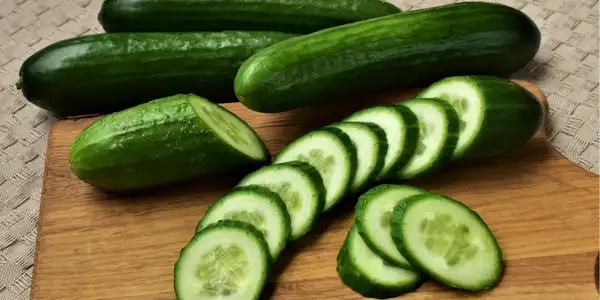
Cucumber, a well-known vegetable, is actually a fruit that contains a lot of beneficial nutrients and antioxidants that keep you well hydrated and curb your...
Read more


|
Nutrient |
Per 100 g |
|---|---|
|
Calorific value |
75 kJ |
|
Energy |
18 kcal |
|
Carbohydrates |
2 g |
|
Protein |
1 g |
|
Fat |
0 g |
The food Radish (fresh) is composed of the following macronutrients.
Radishes have a number of health benefits:
Radishes are a cool root vegetable grown in many parts of the world. They belong to the cruciferous family and have a round or oblong shape. They have a smooth, red skin and a white, crisp interior. Radishes have a sharp, refreshing flavor that is often described as "spicy".
They are eaten raw, such as in salads or as a snack, but can also be cooked or pickled. Radishes are available from May to September, depending on the growing area.
What is the best way to store radishes?
Radishes should be stored as fresh and cool as possible to maintain their quality and shelf life. Radishes should therefore be stored in the refrigerator. It is important to know that radishes cannot be stored for a long time. If they are kept in the refrigerator for more than a week, they may lose flavor and texture. It is best to consume them within a few days.
How are radishes grown and harvested?
Radishes can be sown directly outdoors or in pots, depending on whether they are to be harvested earlier or later in the year. The soil should be moist, but not wet. Radishes need little fertilizer, but it is advisable to provide them with a nitrogen fertilizer to promote healthy growth. Radishes are ready for harvest about 3-4 weeks after sowing.
When is the best time to harvest radishes?
The best time to harvest radishes depends on the variety and growing conditions. Generally, radishes are spring and fall crops and are harvested from May to October. Early varieties can be harvested as early as a few weeks after sowing, while late varieties require about 8 to 10 weeks. When growing radishes, it is important that the fruits grow in a cool and moist environment, otherwise the radishes will spoil quickly and taste bad.
What are the varieties of radishes?
There are many varieties of radishes that vary in size, shape, color and flavor. Some of the most popular varieties are round radish, oblong radish, white radish, black radish, wasabi radish, daikon radish and water radish.
I love this app! The food is super varied and filling (and soo delicious!). With one purchase I have the ingredients for a whole week together, thanks to the shopping list. The ingredients are also readily available and not really expensive.
Nicole — App User
The first app in the field of nutrition tips that really convinces me. Updates get minor issues out of the way and new features are added all the time. Top!
Unknown user — App User
ave already tried many nutrition apps but here it is really great and you save a lot of time because you do not have to enter all the meals yourself! 👍👏
Mareen — App User
I don't usually rate apps but this one has to be rated.... I have never had such a great app just fits everything.... The nutrition plans are just absolutely awesome just everything is awesome many many thanks
Mareen — App User
This app is an excellent support for healthy eating even with little time and effort! Super recipes are also included. Highly recommended!
Lennert — App User